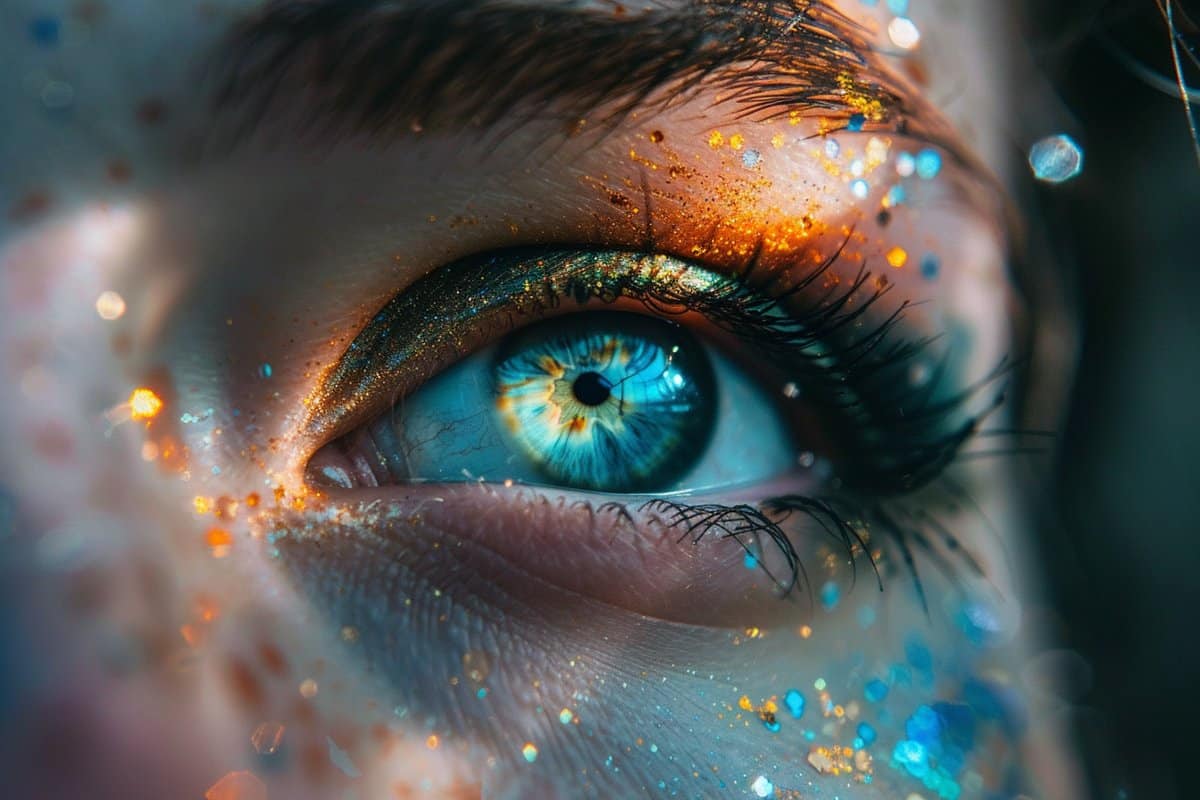Summary: A new study reveals the critical role of blinking in visual perception.
Contrary to the common belief that blinking merely helps keep the eyes moist, the study found that blinking reshapes how visual information is processed by briefly altering the light patterns on the retina. This modulation helps the brain integrate large, gradual changes in the visual scene, enhancing our ability to perceive the overall ‘big picture.’
The research indicates that blinks are an active part of how we see, not just a passive mechanism for eye health.
Key Facts:
- Blinking modulates visual input to the retina, creating different luminance signals that aid in processing visual scenes.
- The study demonstrated that during blinks, humans become more attuned to large, gradual visual patterns, suggesting blinks help in understanding the broader visual environment.
- This finding suggests that vision, like other senses, involves a combination of sensory input and motor activity, challenging the traditional view of visual perception as a mostly passive process.
Source: University of Rochester
The ordinary act of blinking takes up a surprising amount of our waking time. Humans, on average, spend a remarkable 3 to 8 percent of their awake time with their eyelids closed.
Given that blinks prevent an image of the external scene from forming on the retina, it’s a peculiar quirk of evolution that we spend so much time in this seemingly vulnerable state—especially considering that eye blinks occur more frequently than necessary just to keep our eyes well lubricated.
So why is blinking important?

Researchers from the University of Rochester investigated the curious case of blinking and found that eye blinks aren’t just a mechanism to keep our eyes moist; blinks also play an important role in allowing our brains to process visual information.
The researchers published their findings in the Proceedings of the National Academy of Sciences.
“By modulating the visual input to the retina, blinks effectively reformat visual information, yielding luminance signals that differ drastically from those normally experienced when we look at a point in the scene,” says Michele Rucci, a professor in the Department of Brain and Cognitive Sciences.
The big picture—in the blink of an eye
Rucci and his colleagues tracked eye movements in human observers and combined this data with computer models and spectral analysis—analyzing the various frequencies in visual stimuli—to study how blinking affects what the eyes see compared to when the eyelids are closed.
The researchers measured how sensitive humans are at perceiving different types of stimuli, such as patterns at different levels of details. They found that when people blink, they become better at noticing big, gradually changing patterns. That is, blinking provides information to the brain about the overall big picture of a visual scene.
The results show that when we blink, the rapid motion of the eyelid alters the light patterns that are effective in stimulating the retina. This creates a different kind of visual signal for our brain compared to when our eyes are open and focused on a specific point.
“We show that human observers benefit from blink transients as predicted from the information conveyed by these transients,” says Bin Yang, a graduate student in Rucci’s lab and the first author of the paper.
“Thus, contrary to common assumption, blinks improve—rather than disrupt—visual processing, amply compensating for the loss in stimulus exposure.”
Revising a view of vision
The findings further reinforce the growing body of research in visual perception from Rucci’s laboratory, highlighting that how humans see is a combination of sensory input and motor activity.
When we smell or touch, for instance, our body movements help our brain understand space. Researchers previously believed seeing was different, but Rucci’s research lends support to the idea that vision is more like the other senses.
“Since spatial information is explicit in the image on the retina, visual perception was believed to differ,” Rucci says.
“Our results suggest that this view is incomplete and that vision resembles other sensory modalities more than commonly assumed.”
About this visual neuroscience research news
Author: Lindsey Valich
Source: University of Rochester
Contact: Lindsey Valich – University of Rochester
Image: The image is credited to Neuroscience News
Original Research: Closed access.
“Eye blinks as a visual processing stage” by Michele Rucci et al. PNAS
Abstract
Eye blinks as a visual processing stage
Humans blink their eyes frequently during normal viewing, more often than it seems necessary for keeping the cornea well lubricated.
Since the closure of the eyelid disrupts the image on the retina, eye blinks are commonly assumed to be detrimental to visual processing. However, blinks also provide luminance transients rich in spatial information to neural pathways highly sensitive to temporal changes.
Here, we report that the luminance modulations from blinks enhance visual sensitivity.
By coupling high-resolution eye tracking in human observers with modeling of blink transients and spectral analysis of visual input signals, we show that blinking increases the power of retinal stimulation and that this effect significantly enhances visibility despite the time lost in exposure to the external scene.
We further show that, as predicted from the spectral content of input signals, this enhancement is selective for stimuli at low spatial frequencies and occurs irrespective of whether the luminance transients are actively generated or passively experienced.
These findings indicate that, like eye movements, blinking acts as a computational component of a visual processing strategy that uses motor behavior to reformat spatial information into the temporal domain.






